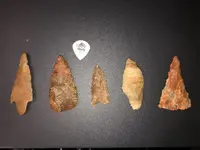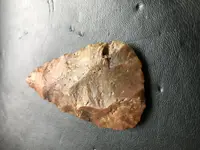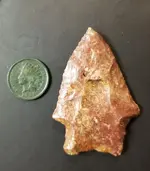BobGuy
Sr. Member
- Joined
- Jul 6, 2013
- Messages
- 331
- Reaction score
- 830
- Golden Thread
- 0
- Primary Interest:
- All Treasure Hunting
Hi everyone,
I’ve had a somewhat decent few months. I’ve switched things up and these have come from 4 different creeks. My main creek has been for sale for nearly a year now so it can go at anytime so I need a backup plan.
The second point from the left has me curious. The reduction flake at the base looks like a flute. Could it be paleo


 u
u
I’ve had a somewhat decent few months. I’ve switched things up and these have come from 4 different creeks. My main creek has been for sale for nearly a year now so it can go at anytime so I need a backup plan.
The second point from the left has me curious. The reduction flake at the base looks like a flute. Could it be paleo



 u
uAmazon Forum Fav 👍
Upvote
0




